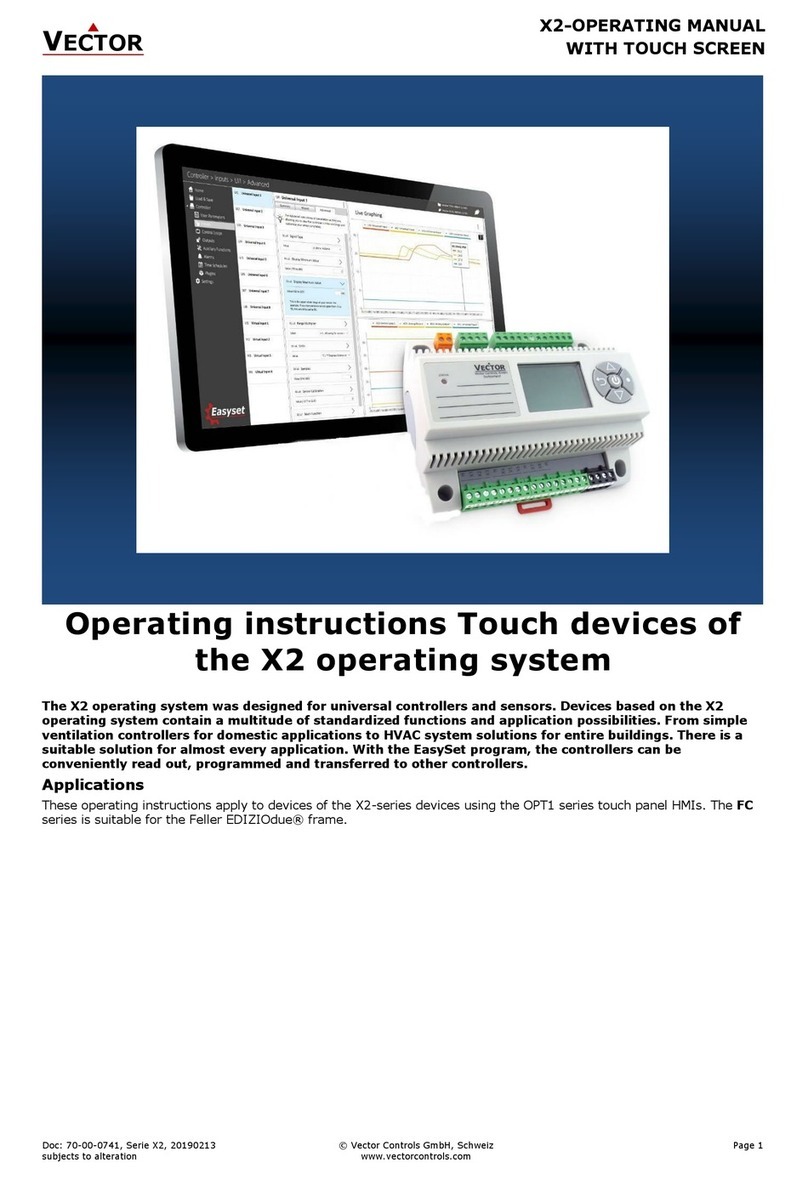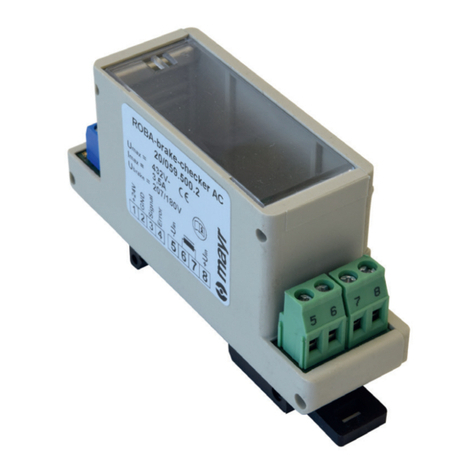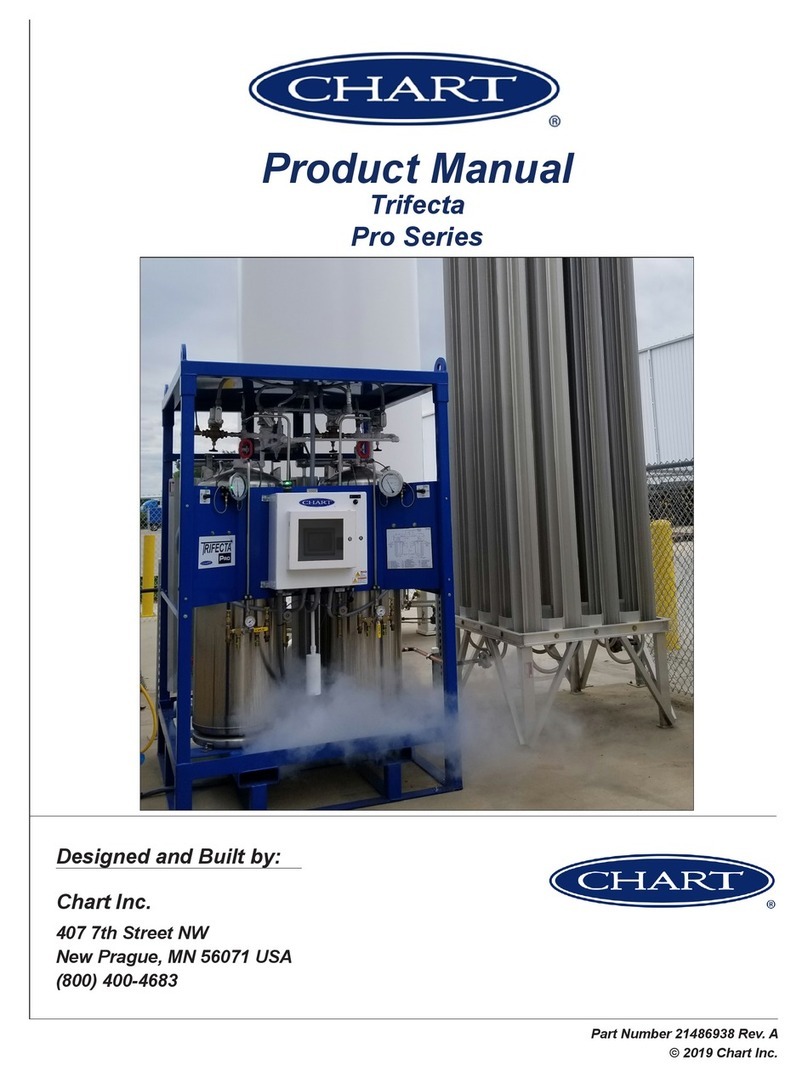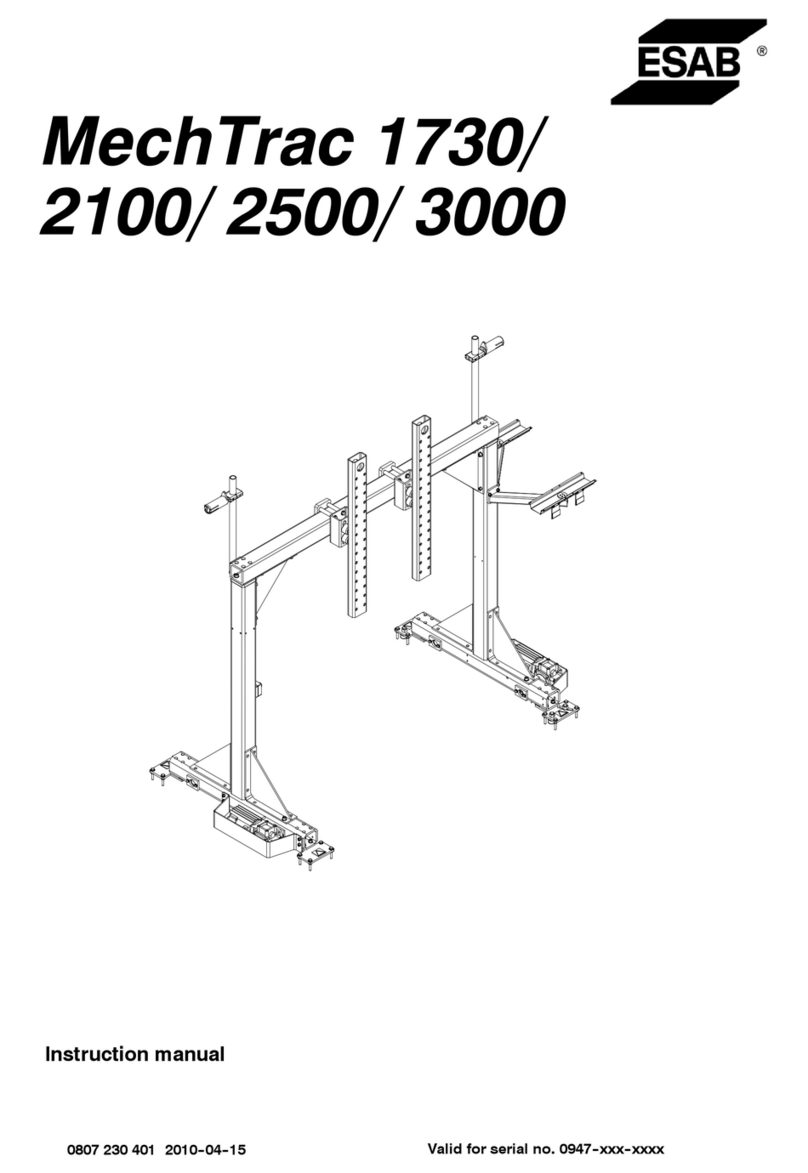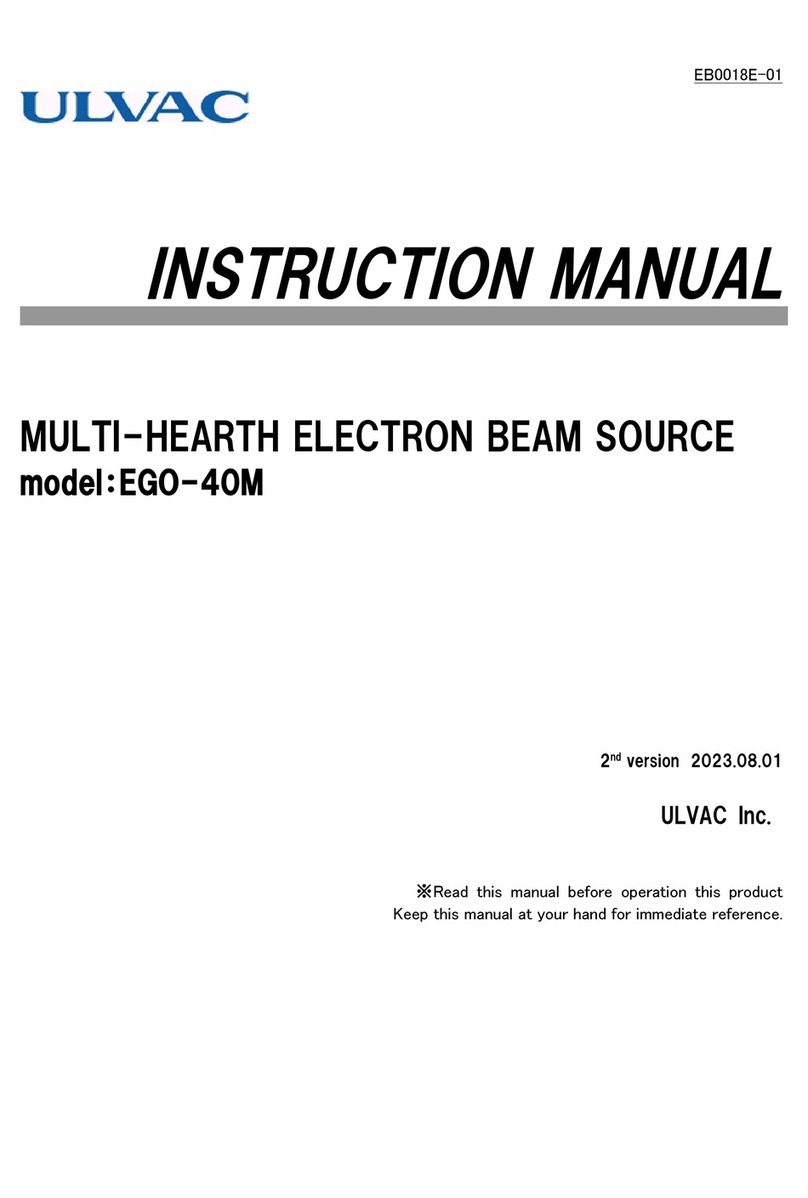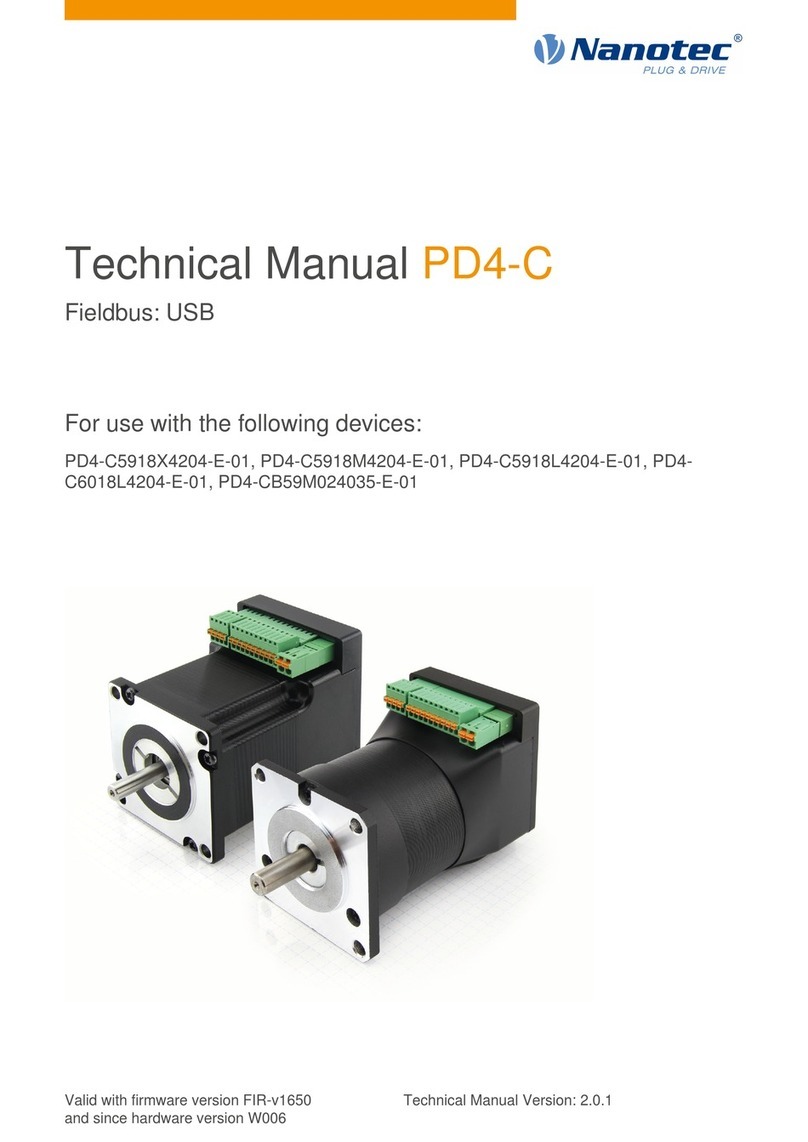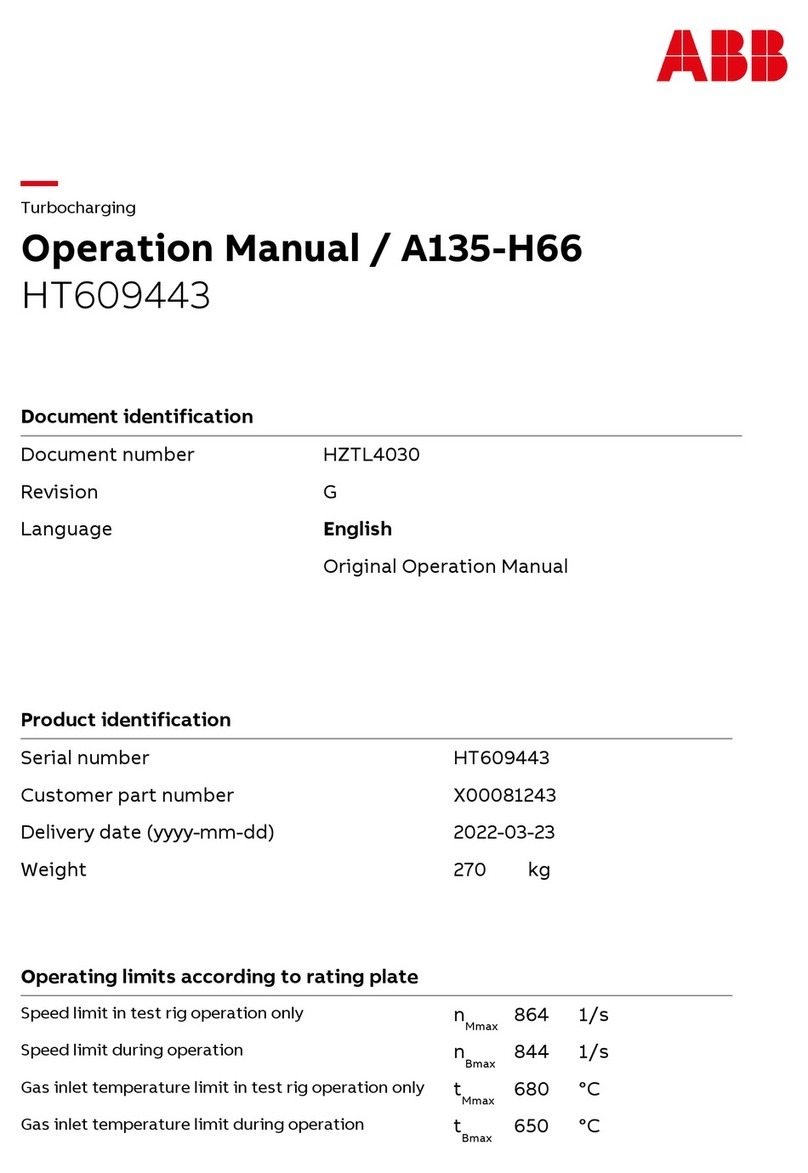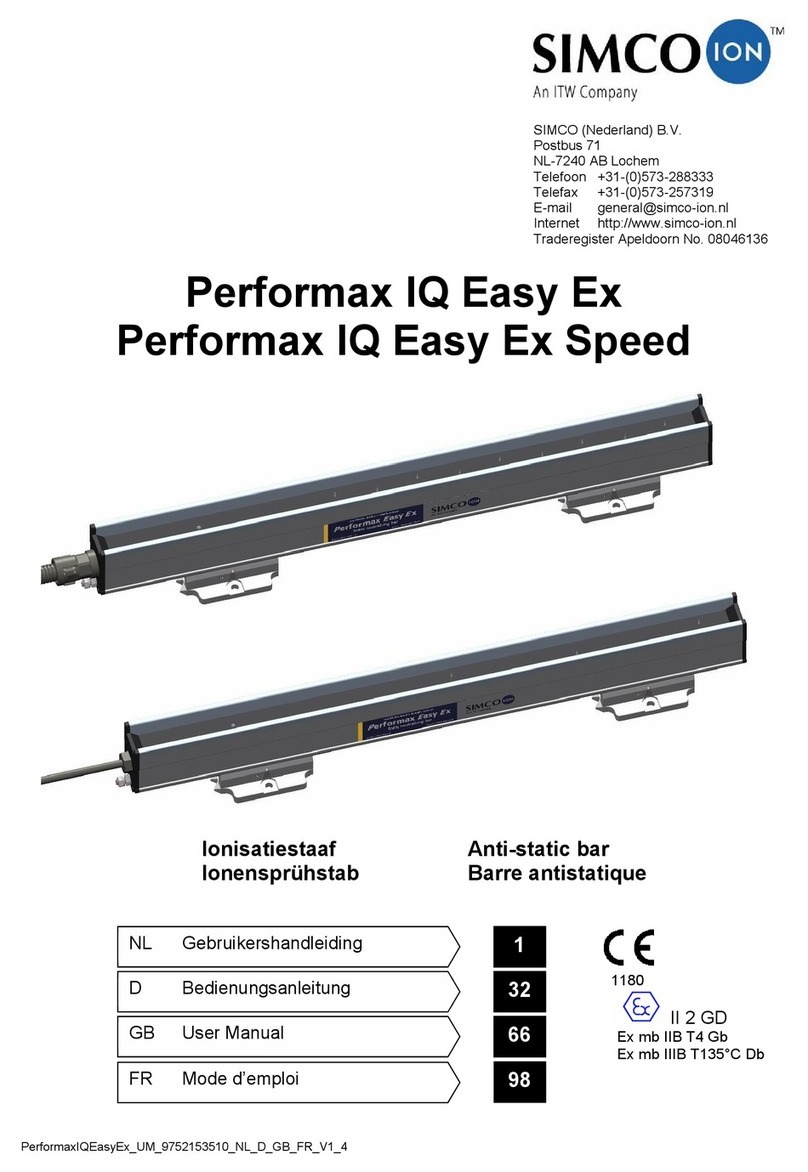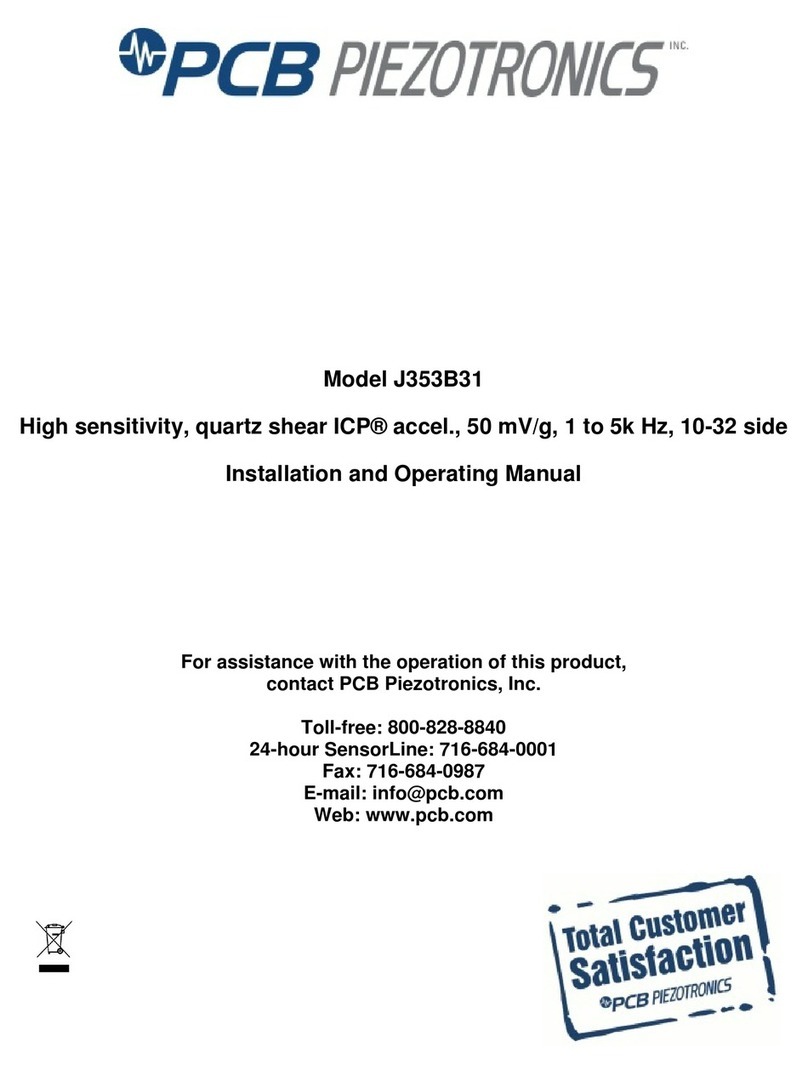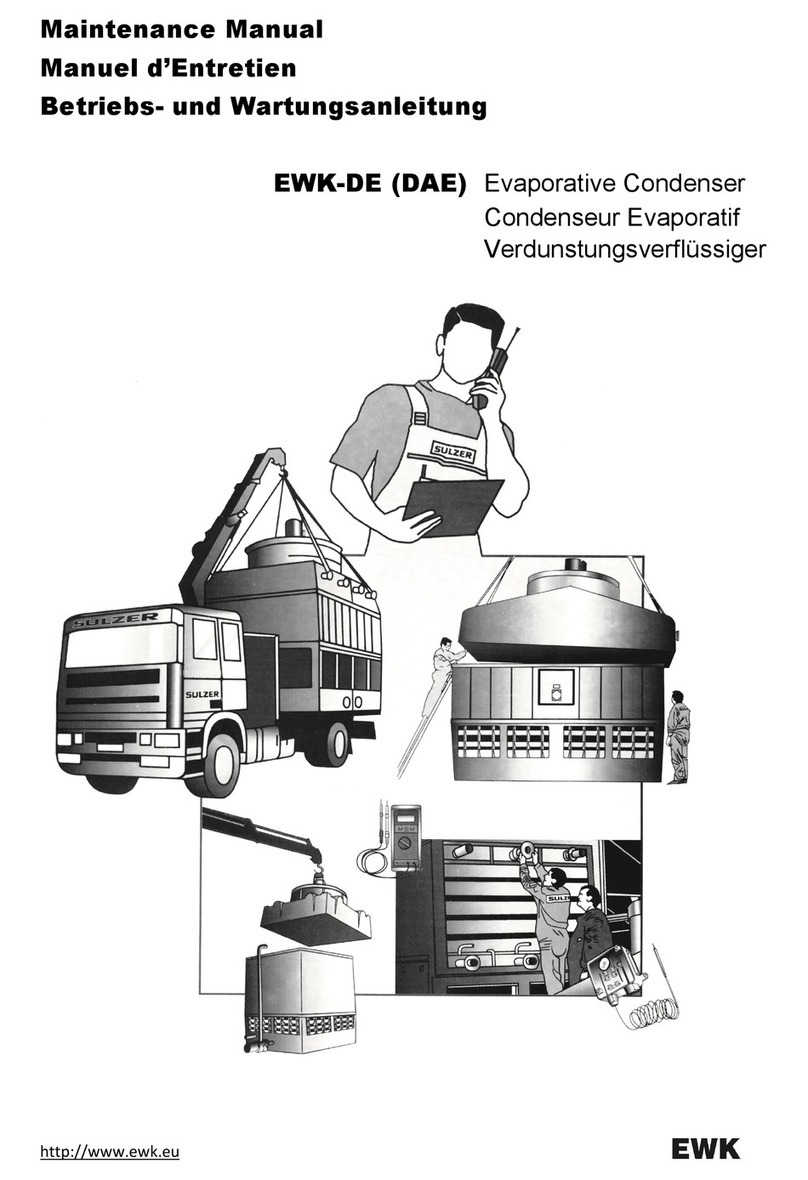TPE ZEVAC User manual

[BM1]
ZEVAC® OPERATOR’S MANUAL
1/22/2018
THIS MANUAL CONTAINS IMPORTANT INFORMATION REGARDING SAFETY,
OPERATION, MAINTENANCE AND STORAGE OF THIS PRODUCT. BEFORE USE, READ
CAREFULLY AND UNDERSTAND ALL CAUTIONS, WARNINGS, INSTRUCTIONS AND
PRODUCT LABELS, FAILURE TO DO SO COULD RESULT IN SERIOUS PERSONAL INJURY
AND/OR PROPERTY DAMAGE. THIS EQUIPMENT SHOULD ONLY BE OPERATED BY
TRAINED PERSONNEL

RETAIN THIS DOCUMENT:
Thank you for choosing to ZEVAC® instead of venting or flaring.
This manual covers the operation and maintenance of ZEVAC® equipment. The information and
specifications included in this publication were in effect at the time of approval for printing. No
part of this publication may be reproduced without written permission.
Keep this owner’s manual handy, so you can refer to it at any time. The illustrations and
procedures may vary according to the type. If a problem should arise, or if you have any
questions about the pump, consult you authorized dealer.
CONTENTS:
1. SAFETY …………………………………………………………………………………………………………………3
2. COMPONENTS & CONTROL LOCATIONS……….……………………………………………………….4
3. CONTROLS…………………………………………………………………………………………………………….5
4. CHECK BEFORE OPERATION…………………………………………………………………………………..7
5. STARTUP…………………………………………………………………………………………………………….…8
6. OPERATION…………………………………………………………………………………………………………..9
7. SHUTDOWN…………………………………………………………………………………………………………..9
8. MAINTENANCE………………………………………………………………………………………………………9
9. TRANSPORTATION/STORAGE…………………………………………………………………………………9
10. COLD WEATHER OPERATION…………………………………………………………………………………11
11. WARRANTY……………………………………………………………………………………………………………12
12. TROUBLESHOOTING……………………………………………………………………………………………….13

SAFETY
WARNING
The operator must be aware of safety precautions to prevent physical injury.
Any pressure-containing device can explode, rupture, or discharge its contents if it is over-pressurized.
Take all necessary measures to avoid over-pressurization.
Operating, installing, or maintaining the unit in any way that is not covered in this manual could cause
death, serious personal injury, or damage to the equipment. This includes any modification to the
equipment or use of parts not provided by TPE MIDSTREAM. If there is a question regarding the
intended use of the equipment, please contact a TPE representative before proceeding.
Do not change the service application without the approval of an authorized TPE representative.
CAUTION
You must observe the instructions contained in this manual. Failure to do so could result in physical
injury, damage, or delays
It is extremely important that you read, understand, and follow the safety messages and regulations
carefully before handling the product. They are published to help prevent these hazards:
•Personal accidents and health problems
•Damage to the product
•Product malfunction
HAZARD LEVELS
DANGER
A hazardous situation which, if not avoided, WILL result in death or serious
injury.
WARNING
A hazardous situation which, if not avoided, MAY result in death or serious
injury.
CAUTION
A hazardous situation which, if not avoided, MAY result in minor or
moderate injury.
NOTICE
A potential situation which, if not avoided, MAY result in undesirable
conditions –or –A practice not related to personal injury

USER SAFETY
These safety rules always apply:
•Always keep the work area clean.
•Pay attention to the risks presented by gas and vapors in the work area.
•Always bear in mind the risk of unplanned depressurization and release of energy.
Use safety equipment according to the company regulations. Additional Personal Protective Equipment
(PPE) may be required. Always use this safety equipment within the work area:
•Hard hat
•Flame Retardant Clothing (FRC)
•Safety goggles, preferably with side shields
•Protective shoes
•Protective gloves
•Hearing protection
•First-aid kit
NOTICE
Never operate a unit unless safety devices are installed. Also see specific information about safety
devices in other chapters of this manual.
COMPONENTS & CONTROL LOCATIONS
Components
Depending on the specific model and configuration, components may vary.
Gas Compression End
Gas Compression End
Air Control Valve
Pneumatic Drive Cylinder
Air Line Water Knockout
Filter
Regulator
Lubricator
Stroke Counter

Control Locations
Depending on the specific model and configuration, control locations may vary.
CONTROLS & INDICATORS
Control
Form
Function
Air On/Off
Manual Valve
In the closed position, air supply is
shut off to the ZEVAC –shutting down
the machine.
Air Pressure Regulator
Manual Adjustment
Raise or lower the maximum air
pressure delivered to the ZEVAC.
Regulator contains a 5/8 Lock Nut and
requires significant user effort to
adjust (wrenches at a minimum).
Air Control Valve Pilot
Reset
Manual Valve
Pneumatic override of automatic pilot
controls. Used to reset air controls to a
default state in the event of air control
malfunction.
Discharge Gas Vent
Manual Valve
In the open position, this valve opens
the discharge gas line to atmosphere,
venting gas. This is used to purge or
depressurize the ZEVAC gas system.

Discharge Pressure
Relief
Automatic PRV
Normally closed, this valve will open if
the Gas discharge pressure ever
exceeds the set point. PRV is not
adjustable without disassembly. Not
field adjustable. Contact manufacturer
to change pressure.
Discharge Pressure
Shutoff
Automatic Interlock
In the event that the discharge
pressure exceeds the set point, this
control valve will prevent the ZEVAC
from continuing to actuate.
Suction Pressure
Shutoff
Automatic Interlock
In the event that the gas suction
pressure drops below the set point,
this control valve will prevent the
ZEVAC from continuing to actuate.
Indicator
Form
Function
Air Supply Pressure
Panel Gauge
Displays the pressure of the air being
supplied to the system downstream of
the air pressure regulator.
Intake Pressure
Indicator
Panel Gauge
Displays the pressure of the fluid
being supplied to the system at the
unit intake connection.
Discharge Pressure
Indicator
Panel Gauge
Displays the pressure of the fluid
being supplied to the system at the
unit discharge connection.
Cycle Counter
Panel Gauge
Displays the lifetime number of cycles
the unit has performed.

CHECK BEFORE OPERATION
Air Supply
DANGER
Follow Lock-out / Tag-out (LOTO) procedures for all process and energy connections.
WARNING
All air supply system components must be rated for the service conditions present.
Step
Check Description
1
Air supply is capable of supplying adequate air volume (at least 90cfm per unit)
2
Air supply is capable of supplying adequate air pressure (at least 100 psig)
3
Air supply is connected to ZEVAC in a secure fashion
4
Air supply connection piping / hoses have been verified to be leak-free
5
Air regulator is set to deliver adequate pressure to ZEVAC (100 –250 psi)
6
VERIFY Hose halters are in place on all hose connections
Inlet Connection
DANGER
Follow Lock-out / Tag-out (LOTO) procedures for all process and energy connections.
WARNING
All gas system components must be rated for the service conditions present.
Step
Check Description
1
Identify inlet gas connection
2
Verify inlet gas connection has isolation valve
3
Inlet Gas Connection is connected to ZEVAC in a secure fashion
4
Inlet Gas piping / hoses have been verified to be leak-free
5
Inlet Gas piping has an isolation valve
6
Verify hose halters are in place on ZEVAC inlet gas hose.
Discharge Connection
DANGER
Follow Lock-out / Tag-out (LOTO) procedures for all process and energy connections.
WARNING
All gas system components must be rated for the service conditions present.
Step
Check Description
1
Identify discharge gas connection

2
Verify discharge gas connection has isolation valve
3
Discharge Gas Connection is connected to ZEVAC in a secure fashion
4
Discharge Gas piping / hoses have been verified to be leak-free
5
Discharge Gas piping has an isolation valve
6
Verify hose halters are in place on ZEVAC discharge gas hose.
Fluids
Step
Check Description
1
Verify Air Lubrication Fluid has adequate level. Add fluid if necessary.
2
Verify Air/Water separator is empty and drain is not obstructed.
3
Verify Air Filter drain is not obstructed.
Visual Inspection
Step
Check Description
1
Verify the unit has not been damaged during shipping and handling
2
Open the front panel and inspect the internal assembly
3
Verify all connections are tight and all hose connections are secured
4
Verify all safety controls are in place and properly connected.
STARTUP
Pre-Startup Purge (First Startup)
In order to avoid the mixture of air and flammable gases, it is required to purge the ZEVAC® of
air before introducing other gasses. Purging can be accomplished with inert nitrogen. The
procedure for performing this purge is listed here:
Step
Check Description
1
Connect an inert gas such as Nitrogen to the Gas Intake piping (“Tree”)
2
Open Discharge Gas Vent / Dump Valve
3
Open Nitrogen supply to flow into the ZEVAC®
4
Open the Air connection to actuate the ZEVAC®
5
The ZEVAC® will move Nitrogen through the system and out the discharge vent
6
Continue purging with the ZEVAC® running for 30 seconds
7
Verify 0% oxygen present in the vent gas stream
8
Purging complete, disconnect Nitrogen
9
Do not allow air to re-enter the system
*The equipment can be purged with other gases in a similar fashion if nitrogen is unavailable.
Routine Startup
Step
Check Description

1
Perform all steps of “Check Before Operation”
Purge with system gas (if purging with inert gas, modify this procedure)
Purge should be performed with gas from inlet stem passing through inlet hose,
Zevac machine, and outlet hose, center from discharge tree
2
Verify Gas Inlet connection is open to system gas
3
Verify Gas Inlet Pressure indicator correctly indicates system gas pressure
4
Verify Gas Discharge connection is open to system gas
5
Verify Gas Discharge Pressure indicator correctly indicates system gas pressure
6
Record Starting Conditions
•Inlet Gas Pressure
•Discharge Gas Pressure
•Stroke Count
7
Open Air Control Valve to Start ZEVAC® Operation
8
Verify smooth and normal ZEVAC® Operation
9
Always monitor ZEVAC® during operation
OPERATION
Step
Check Description
1
Verify Gas Inlet pressure is dropping
2
Verify Gas Discharge pressure is not rising
3
Verify adequate air lubrication levels are maintained throughout operation
4
Verify stroke counters are steadily increasing
SHUTDOWN
Step
Check Description
1
Close Gas Intake Isolation Valve
2
ZEVAC® low-pressure shutoff switch should automatically stop ZEVAC function
3
Close Air Control Valve
4
Close Gas Discharge Isolation Valve
5
Open Gas Discharge Vent valve to depressurize ZEVAC® and discharge piping
TRANSPORTATION AND STORAGE
DANGER
Disconnect and Follow Lock-out / Tag-out (LOTO) procedures for all process and energy connections.
WARNING
Stay Clear of Suspended Loads
Observe Accident Prevention regulations in force
Inspect the unit

1. Remove packing materials from the product. Dispose of all packing materials in accordance
with local regulations.
2. Inspect the product to determine if any parts have been damaged or are missing.
3. If applicable, unfasten the product by removing any screws, bolts, or straps. For your
personal safety, be careful when you handle nails and straps.
4. Contact the local sales representative if there is any issue.
Lifting
Lifting equipment and tackle should always be inspected before starting work.
WARNING - Crush Hazard
• Always lift the unit by its designated lifting points.
• Use suitable lifting equipment and ensure that the product is properly harnessed.
• Wear personal protective equipment.
• Stay clear of cables and suspended loads.
WARNING
Lift and handle the unit carefully, using suitable lifting equipment
The lifting equipment must be in good condition and operated by authorized personnel.
The lifting equipment must have the lifting capacity for the complete weight of the assembly.
When a crane is used, the minimum height between the lifting hook and the ground must be sufficient to lift the
unit straight up and down.
Lifting the unit using a crane
Use only lifting equipment of suitable capacity for the size and weight of the lifted equipment.
The equipment must always be lifted using safe working practices and in accordance with any
local and national guidelines or statutes.
1. Check that the site where the unit is placed has a clean and level surface. Stones and other
debris damage the bottom structure of the unit.
2. If the unit was secured to a pallet, flatbed or other surface, cut the transportation straps.
3. If the unit has a single lift point, connect the crane hook to the lift bail or use a shackle.
4. If the unit is an enclosure, then only lift from the single point lifting bail.
5. If the unit has multiple lifting points, then fasten a suitable lifting strap or sling to the
available lifting bolts. To reduce damage to the assembly or components, use a spreader.
6. Lift the unit using the proper lifting equipment.
7. Place the unit on firm, level ground.
Lifting the unit using a forklift
Use only lifting equipment of suitable capacity for the size and weight of the lifted equipment.
The equipment must always be lifted using safe working practices and in accordance with any
local and national guidelines or statutes.
1. Check that the site where the ZEVAC® is placed has a clean and level surface. Stones and
other debris damage the bottom structure of the unit.

2. If the unit was secured to a pallet, flatbed or other surface, cut the transportation straps.
3. Align the forklift prongs with the forklift holes in the bottom of the ZEVAC® base.
4. Insert the forklift prongs into the forklift holes.
5. Lift the unit and move it to its new position.
6. Place the ZEVAC® upright on a rigid horizontal surface so that it cannot fall over.
Towing
Read the trailer operation manual before connection of the trailer to the tow vehicle.
• Follow all highway laws that pertain to the tow vehicle and the trailer in your region.
• Use the proper sized tow vehicle for the load of the trailer.
• Ensure the trailer is operational and maintenance steps are complete.
• After connecting the trailer to the tow vehicle, check that the hitch assembly is latched.
• Verify that the rear and tongue jacks are raised after the trailer is attached to the tow vehicle.
Storage
The product must be stored in a covered and dry location free from heat, dirt, and vibrations.
Protect the product against humidity, heat sources, and mechanical damage.
NOTICE
Do not expose an idle unit to freezing conditions. Drain all liquid that is inside the unit and connected
pipes. Failure to do so can cause liquid to freeze and damage the unit.
Empty the ZEVAC® of all product and clean surfaces of dirt, debris, oil, fuel, and associated
matter.
COLD WEATHER OPERATIONS
In cold weather ambient conditions, it may be necessary to warm the system to temperatures
above freezing prior to startup.

WARRANTY
Product warranty
TPE MIDSTREAM undertakes to remedy defects in products from TPE under these conditions:
• The faults are due to defects in design, materials, or workmanship.
• The faults are reported to a local sales and service representative within the warranty period.
• The product is used only under the conditions that are described in this manual.
• The monitoring equipment incorporated in the product is correctly connected and in use.
• All service and repair work that is done by TPE authorized personnel.
• Genuine TPE parts are used.
• Only Ex-approved spare parts and accessories that are authorized by an Ex-approved TPE
representative are used in Ex-approved products.
Limitations - The warranty does NOT cover defects that are caused by these situations:
• Deficient maintenance
• Improper installation
• Modifications or changes to the product and installation that are made without consulting a
TPE authorized representative
• Incorrectly executed repair work
• Normal wear and tear
TPE assumes NO liability for these situations:
• Bodily injuries
• Material damages
• Economic losses
Warranty claim
TPE products are high-quality products with expected reliable operation and long life. However,
should the need for a warranty claim arise, contact your local sales and service representative.

TROUBLESHOOTING
Call 1-855-ZEVAC-GO for troubleshooting support.
If any abnormal operating conditions exist, follow “SHUTDOWN” instructions in this manual.
ZEVAC® WILL NOT RUN
•Verify Valves are in correct positions.
•Verify Air Supply is producing adequate pressure and flow.
•Verify drawdown system pressure is above the low-pressure cutoff pressure.
•Verify discharge system pressure is below the high-pressure cutoff pressure.
•Manually actuate the air control valve pilot reset valves, which are located inside the
unit housing above the pressure indicators.
•If normal operation cannot be achieved, call 1-855-ZEVAC-GO for support.
DRAWDOWN PRESSURE IS NOT REDUCING
•Verify Valves are in correct positions and the ZEVAC intake is open to the drawdown
system.
•Verify the drawdown system is isolated. If the drawdown system is open to any source
of flow, the ZEVAC will not be able to reduce the system pressure. This can occur in the
case of a valve leaking past its seats while in the closed position. As the ZEVAC is
evacuating gas, the valve is allowing gas to enter the drawdown system and the
pressure may not drop or may reduce more slowly than normal.
•If the ZEVAC® seems to be operating normally, but the drawdown pressure is not
reducing, call 1-855-ZEVAC-GO for troubleshooting support.
DISCHARGE PRESSURE IS RISING
•Turn OFF the ZEVAC (Close Air Control Valve) Immediately
•Verify Valves are in correct positions and the ZEVAC discharge is open to the discharge
system. A closed valve in the discharge piping will cause discharge pressure to rise.
•Verify discharge piping and connections are sized adequately, the discharge piping
should be the same size as the inlet piping.
•Depressurize Discharge System if necessary
•Call 1-855-ZEVAC-GO for support if the problem is unresolved
ZEVAC® IS RUNNING SLOWLY
•ZEVAC® is not a high-speed machine. It will normally operate slowly and smoothly.
There are many situations that can cause the ZEVAC® to run slower than normal. For
example, liquids in the intake system will slow down the ZEVAC®. Also, start-up in very
cold conditions can cause slow actuation rates until the machine warms up. Also, excess
moisture in the air system can cause

•Verify the Air Control Valve is fully opened
•Verify the Onboard Air Pressure Regulator is set correctly
•Verify the air hose/piping is free of restrictions
•Verify the air supply system is delivering at least 90-100 cfm per unit at 100-150 psig.
•Check that there are no air leaks within the ZEVAC® Air System
•Call 1-855-ZEVAC-GO for support if the problem is unresolved
ZEVAC® IS MAKING ABNORMAL SOUNDS
•The ZEVAC® will normally produce several audible sounds during operation. The most
notable is the steady exhausting of the driving air. This release of air pressure should be
intermittent, occurring as the unit changes directions back and forth internally.
•The ZEVAC® may automatically or manually dump water from the air system during
normal operation, and this water release will be audible and visible.
•The ZEVAC® gas compression system is a dry non-lubricated system. Depending on the
cleanliness and lubricity of the product being moved, the internal parts may squeak. This
is not an abnormal operating condition, but the symptoms should not persist or increase
beyond a temporary condition.
•Any sudden “Bang” or the non-intermittent sound of gas being released is an indicator
of an abnormal operating condition. Follow SHUTDOWN procedure and call 1-855-
ZEVAC-GO for support and maintenance.
FROST IS FORMING ON ZEVAC COMPONENTS
•In low temperature ambient conditions, water vapor in the air system can freeze.
Freezing can damage the components and poses a safety hazard. Take steps to prevent
freezing in the air system.
•In certain product streams, at certain temperatures and pressures, a phase change can
take place within the ZEVAC, which can produce low temperatures. Exercise extreme
caution to avoid conditions that cause local temperatures to drop below the minimum
design metal temperature MDMT (-20F).
WATER IS BLOWING OUT WITH THE AIR EXHAUST
•It is common for air compressors to introduce moisture to the air supply. There is
equipment on the ZEVAC® that is designed to eliminate as much of this water as
possible, but it is common in certain operating conditions such as high humidity for
water vapor, mist, and liquids to be present in the air system. Water in the air system
will reduce the lifespan of the system.
•Verify air/water separator is draining
•Verify filter is draining
•Vent cylinders to release any captive water in the drive cylinder

WARNING
This equipment, like any piece of equipment, can be dangerous if not operated properly.
YOU are responsible for the safe operation of this equipment. The operator must
carefully read and follow any warnings, safety signs and instructions provided with or
located on the equipment. Do not remove, defeat, deface, or render inoperable any of
the safety devices or warnings on this equipment. If any safety devices or warnings
have been removed, defeated, defaced, or rendered inoperable, DO NOT USE THIS
EQUIPMENT!
SAFETY CHECKLIST: Tips for ZEVAC operation safety:
1. Always read the warning labels on the equipment, and operating instructions.
2. Always treat the equipment as though it may contain high pressure gas.
3. PPE including eye safety devices, foot protection, and a hard hat should be worn when using this
equipment. High pressures from these units can cause bodily harm.
4. Always maintain clear access to the air compressor supply air to the device. In the event that the
ZEVAC unit cannot be accessed and needs to be shut down, turn off the air supply.
5. Always turn off the unit when making adjustments or changing connections.
6. Inspect condition of the high-pressure hoses, tubing, pipe, valves, and all materials before use.
7. The ZEVAC equipment is commonly used in flammable gas conditions. Exercise all precautions
and care to ensure safe operations in these environments.
8. Exercise care when using this equipment.
9. Never place yourself in the line of fire of this equipment.
10. If using hoses, always utilize proper hose restrains.
11. Never allow children or unauthorized personnel to handle ZEVAC.
12. Do not alter the ZEVAC unit in any manner. If repairs are necessary, contact 1-855-ZEVAC-GO.
13. Do not leave ZEVAC under pressure unattended at any time.
WARNING
This equipment is capable of generating very high pressure. When connected to other
systems, make sure these other systems can protect themselves from over-
pressurization. The ZEVAC pressure relief devices are designed to protect the ZEVAC,
and not intended to provide overpressure protection to connected systems.
Table of contents
Popular Industrial Equipment manuals by other brands

Siemens
Siemens 7KM9900 - 0GA00 - 0AA0 operating instructions
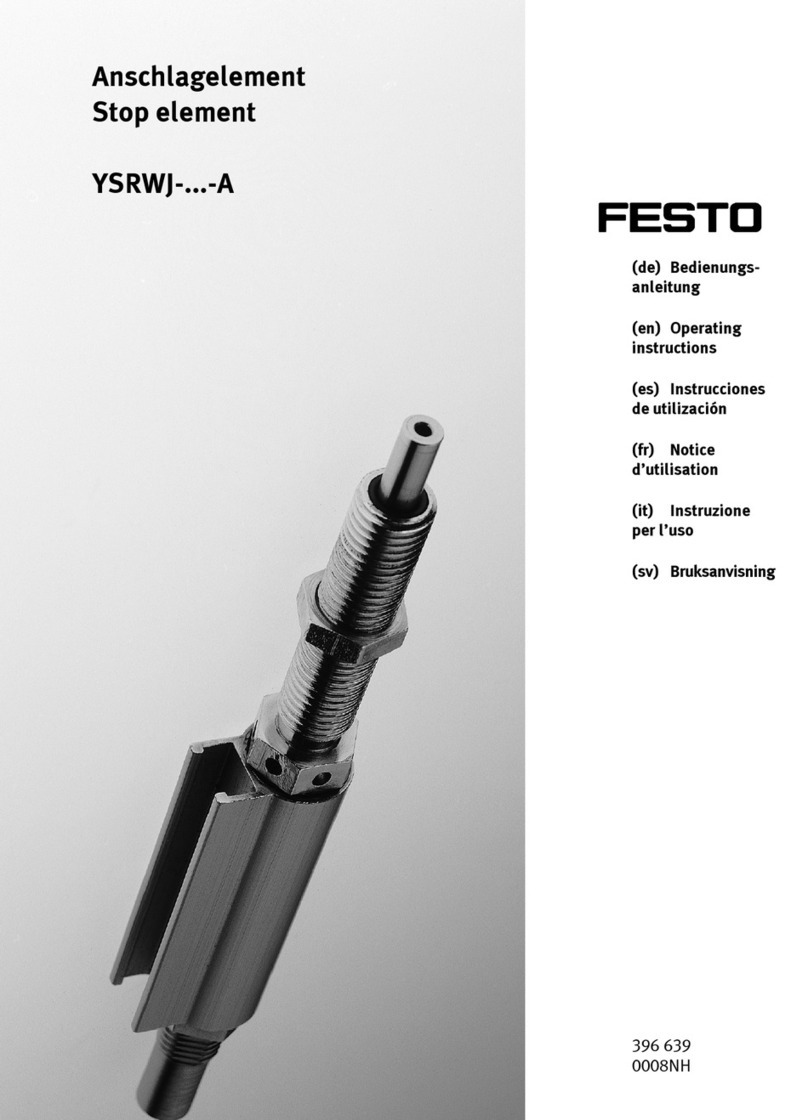
Festo
Festo YSRWJ A Series operating instructions
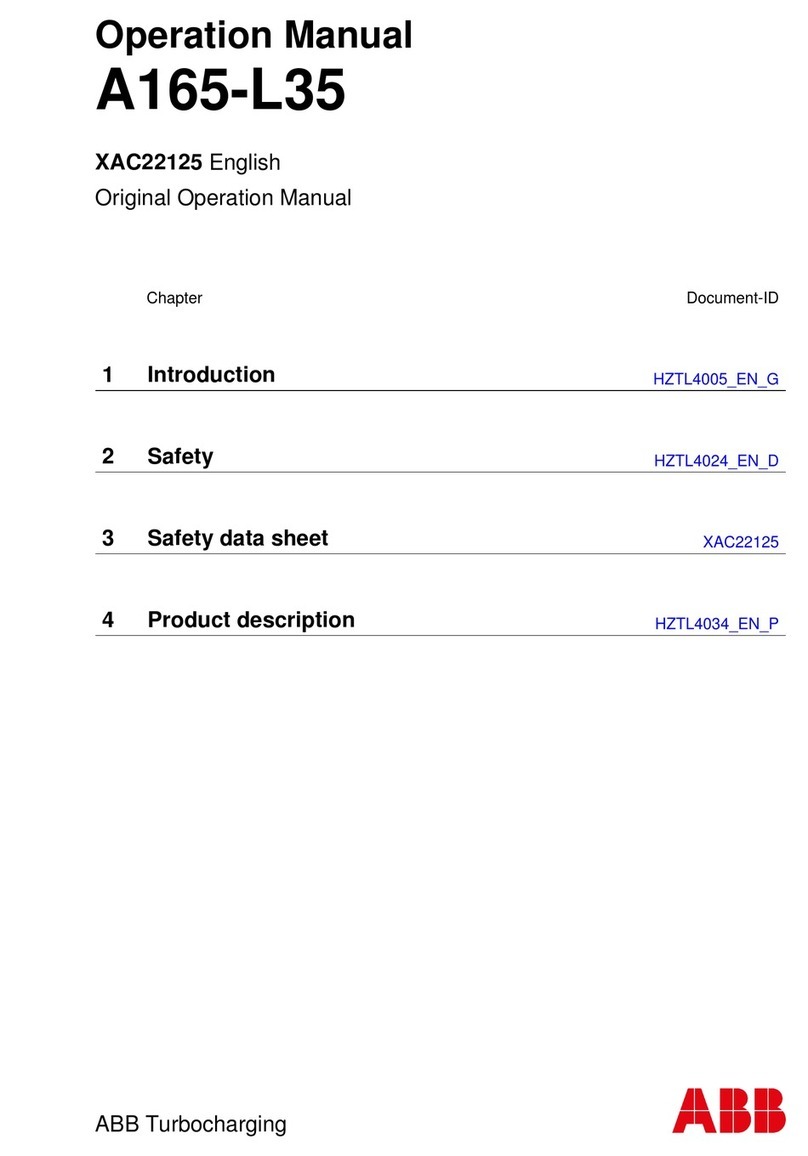
ABB
ABB A165-L35 Operation manual

Wöhner
Wöhner CrossBoard 11 500 quick start guide
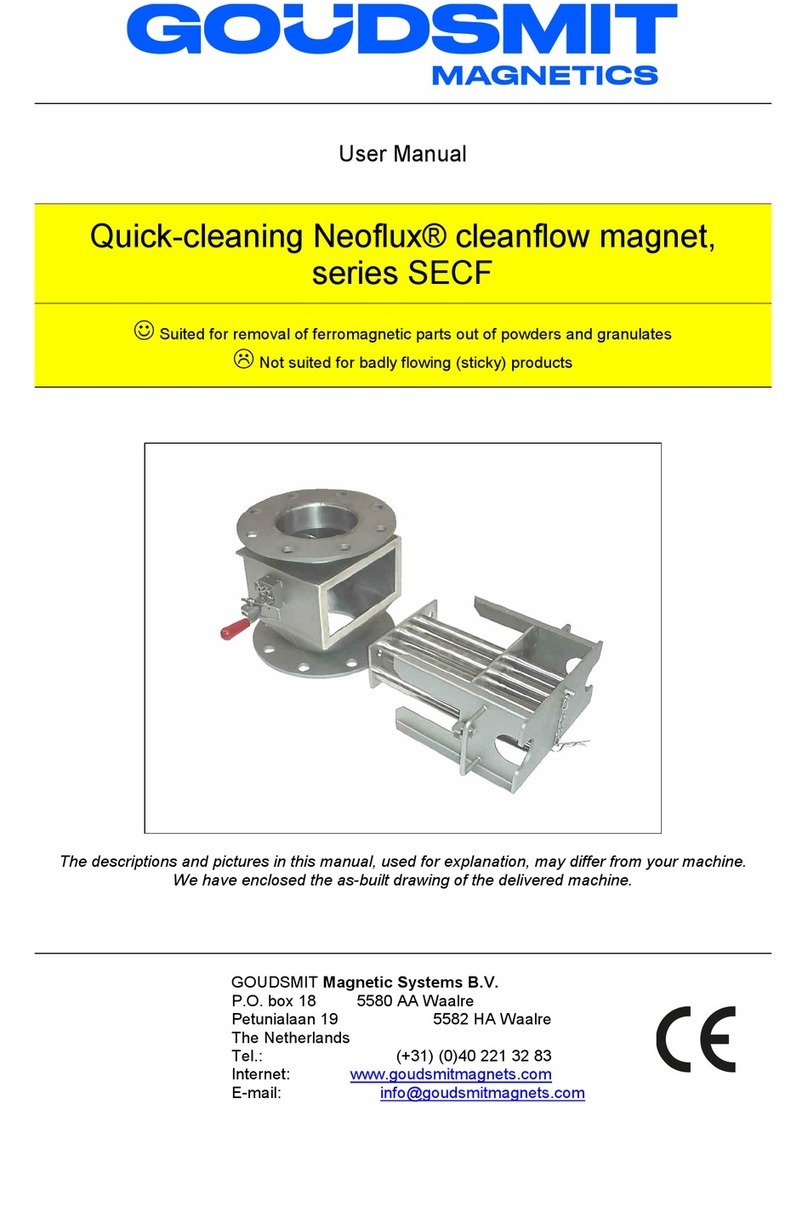
Goudsmit
Goudsmit Neoflux SECF Series user manual
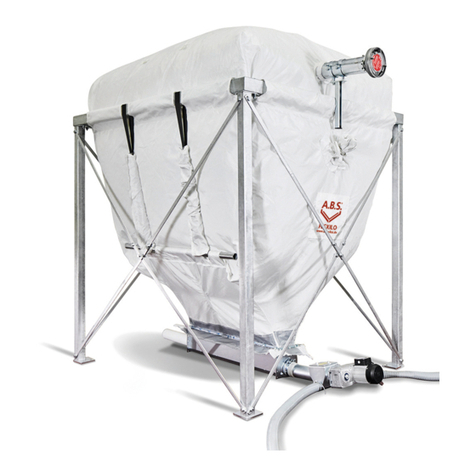
A.B.S.
A.B.S. Flexilo SPRING Assembly-, Operating-, and Filling Instructions
